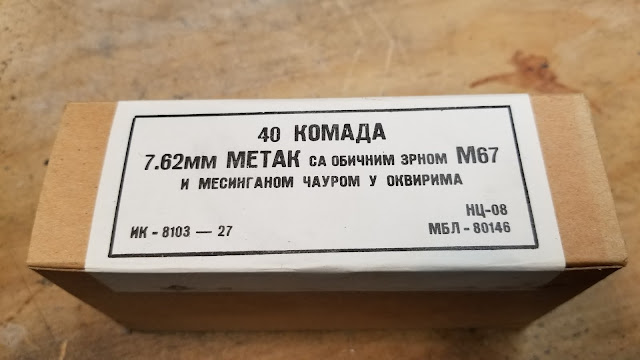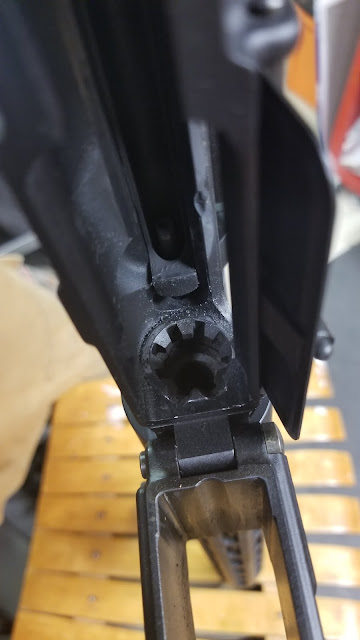Yugoslavian M67 Ball Ammunition
Introduction:
Doing something a bit different today. I know there are a lot of people out there that are interested in specifics about certain cartridges as well as things like headstamps, so I thought I'd go into some detail on M67 ammo since it's a bit different and I have some lying around. Enjoy and thank you for reading!For those that are curious, the text on the box roughly translates to:
40 PIECES
7.62mm CARTRIDGES Ball Regular M67
WITH BRASS CASE ON CLIPS
Details:
Yugoslavian M67 ball ammunition is a 7.62x39 loading that was first adopted in 1967 and used all the way through to the 1990's. The round was widely used in Yugoslavian M70 rifle variants and has seen widespread combat use. M67 ball is widely regarded as some of the highest quality 7.62x39mm ammunition that is available in bulk and shipments of surplus ammunition onto the US civilian marketplace are quickly bought up.The ammunition comes in packages of 40 rounds on 10 round stripper clips. When the M67 cartridge was developed, Yugoslavia's standard infantry rifle was the SKS, so having rounds packed on clips made sense. However, this packaging of cartridges on clips continued well into the 80's when the M70 AK variant was being widely used. SKS stripper clips are't known for feeding particularly smoothly, but they do function well and they get the job done.
The M67 round is a lead core,124 grain, flat-bottom projectile traveling at approximately 735 meters/second. This differs from many traditional loadings of 7.62x39, that typically feature a 123 grain or 124 grain FMJ boat-tail bullet. The flat-bottom projectile was specifically chosen to increase wounding capability. The flat-bottom bullet tends to yaw and tumble when it hits a soft target much sooner than a boat-tail projectile. Although less stable at longer range, with a 7.62x39 round, long range isn't really in the picture anyway.
The M67 cartridge is known as a high quality round, and this shows in its build quality as well as the simple fact that it's brass-cased and not steel. Additionally, you can see the annealing on the case neck, an extra process that reduces the likelihood of a rupture upon firing. The fact that the ammunition plant goes through this extra process instead of just loading steel-cased ammo speaks to the quality of manufacture.
In addition to the headstamp on the case head, note the lacquer in the primer pocket. This is another added step to help protect the ammunition from moisture while in storage and ensuring proper function. The case head indicates the year of manufacture as well as the ammunition plant. The "NK" stamp pictured indicates that this round was made in the Igman ammunition plant in modern day Bosnia. There are a couple different headstamps for M67 ammo, but the "NK" type is the most common.
Conclusion
Ammunition specifics are a pretty niche topic in the world of firearms, but things like surplus ammo can be enjoyed by anyone, no matter their interests. For the shooter, surplus ammo like M67 ball is typically a cheap option for shooting a lot. M67 ball is actually some of the cheaper brass-cased 7.62x39 that I've seen. For the prepper, surplus ammo can be found a lot in sealed, air-tight crates and containers. And finally for the history buff, surplus ammunition typically has a rich history of use in conflicts around the world, and things like headstamps and labels can be used to learn where and when the ammo originated.
All-in-all, M67 ball ammunition is some high quality, fairly cheap surplus ammo that, to me, is just cool to have, look at, and shoot.





Are the brass cases able to be loaded normally and have a single center primer flash hole?
ReplyDeleteUnfortunately no. M67 cases are berdan primed similar to most brands of steel-cased 7.62x39
Delete